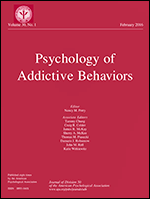Researchers are correcting a widely covered study that suggested chronic use of pot might not put users at risk of problems later in life.
It turns out that initial, unexpected finding — covered by Newsweek, The Washington Post, Quartz, and (of course) The Stoner’s Cookbook (now known as HERB) — wasn’t quite right, and a reanalysis found users had a small uptick in risk for psychosis. The authors have issued a lengthy correction in Psychology of Addictive Behaviors that includes some supplemental analysis, too.
Not surprisingly, the study’s findings engendered some controversy, which prompted the authors to reanalyze their data, collected from 408 males with varying levels of marijuana use, who were followed from their teens into their 30s.
Now, an American Psychological Association press release that accompanied the initial findings in August contains an editors note explaining why those aren’t quite correct:
The study referenced below has been corrected because of a statistical error that affected some of the findings. The article reported that chronic teen marijuana use did not appear to be linked to several physical or mental health issues later in life, including psychotic disorders. However, a re-analysis of the raw data found that teen marijuana users did have an increased risk for psychotic disorders compared to non-users, while the other findings remained unchanged.
That same press release had admitted that the findings — which said pot did NOT put users at risk for problems like asthma, cancer, allergies, and a suite of other health problems — contradicted some prior research:
“What we found was a little surprising,” said lead researcher Jordan Bechtold, PhD, a psychology research fellow at the University of Pittsburgh Medical Center. “There were no differences in any of the mental or physical health outcomes that we measured regardless of the amount or frequency of marijuana used during adolescence.”
“Chronic Adolescent Marijuana Use as a Risk Factor for Physical and Mental Health Problems in Young Adult Men” was published August 3, 2015 by Psychology of Addictive Behaviors. It has been cited once, according to Thomson Scientific’s Web of Knowledge.
The full correction, on the final page of the PDF of the article, explains that the “results from this study generated considerable controversy, including requests for supplemental analyses.” These supplementary analysis provided generally the same results, with the one twist:
This reanalysis suggests that, in general, the three marijuana-using groups combined were not significantly different from the low/no use group on the health outcomes. The group difference on psychotic disorder approached statistical significance and would have been significant if a more liberal test (i.e., one-tailed) was utilized.
In the correction, the author provide data from a supplemental analysis, and reiterated the limitations of the study:
(a) The sample included young men who were using marijuana in the late 1990s and early 2000s and THC content has risen recently; (b) data were obtained from self-reports; (c) power was low, particularly for low base-rate outcomes, such as psychotic disorders; and (d) causal and even temporal inference in observational studies is inherently limited.
And they point to some of the conflicting research:
It is important to keep in mind that many other studies have found associations between heavy marijuana use and various mental and physical health problems, particularly psychotic disorders (Semple, McIntosh, & Lawrie, 2005; Volkow, Baler, Compton, & Weiss, 2014; Wilkinson, Radhakrishnan, & D’Souza, 2014).
Editor’s note 1/21/16 2:10 p.m. eastern: The Washington Post story about the original paper includes an update reporting the authors’ clarification, which says it was issued in December, 2015.
Update 1/24/16 8:16 p.m. eastern: The APA has updated its editor’s note to the original press release about the study. (Thanks to WNYC for noting this.) The new text — which notes the findings about psychosis did not reach statistical significance — reads as follows:
EDITOR’S NOTE: A clarification of the study referenced below was issued because of controversy surrounding the findings. The original article reported there was not a statistically significant difference among four groups of males who exhibited varying patterns of teenage marijuana use in relation to several physical and mental health issues later in life, including psychotic disorders. Because of the controversy, the authors were asked to conduct a different set of analyses that compared teens who were infrequent or nonusers of marijuana to a combined group of teens who used marijuana regularly over multiple years. Although these supplemental analyses indicated that teens who engaged in frequent marijuana use had a higher probability of meeting criteria for a psychotic disorder than infrequent/nonusers by their 30s, this difference did not reach statistical significance using a two-tailed test (p=.09).
Like Retraction Watch? Consider making a tax-deductible contribution to support our growth. You can also follow us on Twitter, like us on Facebook, add us to your RSS reader, and sign up on our homepage for an email every time there’s a new post. Click here to review our Comments Policy.

This study is of interest because it confirms other objective studies that have not received as much recognition. In particular, the association with psychosis, while of borderline statistical significance, confirms other observations that have been widely reported. They may be controversial, but they are consistent and probably accurate. There is no association with lung cancer, but there is an association with schizophrenic symptoms.
It is curious that no-one has commented on this post yet, after two weeks…